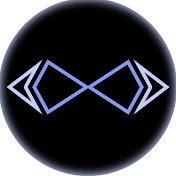In this episode of The Rollup, which took place on February 26, 2024, Robbie, Andy, and Jake discuss Mitosis, its features, and future plans. Read our notes below to learn more.
Background
- Robbie (Host) – Merkle Tree Maxi, Co-Founder of The Rollup
- Andy (Host) – zkProof Maxi, Co-Founder of The Rollup
- Jake (Guest) – Founder of Mitosis
- Mitosis – liquidity protocol for the Modular era
Modular Liquidity and Origin Story
- Jake says that he has been a builder in crypto since 2019. Initial concept development during a hackathon involving liquid staking tokens on Cosmos.
- He says that he transitioned from Keplr to Mitosis due to infrastructure needs for IBC transactions.
- Jake says that founding Mitosis is based on the liquid staking token concept. They collaborated with Terra for a lending protocol leveraging liquid staking tokens. Their team was split after that. He transitioned to Anchor for building protocols before creating an independent team post-Tera debacle.
- Jake talks about his initial belief in app chains’ significance within blockchain ecosystems. He explored ZK snarks for unification efforts. He discovered Hyperlane‘s vision for permissionless interoperability solutions.
Mitosis – Solving Interoperability Liquidity Challenges
- Jake says that Mitosis addresses liquidity challenges in interoperability by introducing a modular liquidity layer powered by Hyperlane, enhancing cross-chain functionality.
- He adds that Mitosis was tailored for moderate blockchains with an ethos of permissionless customization. Mitosis offers seamless liquidity transfer for rollups and newly created chains, enhancing capital efficiency for liquidity providers. He draws parallels to biology, the name “mitosis” was chosen for its smooth connotation initially but later found to align with the concept of duplicating liquidity akin to cell division.
Enhancing Liquidity Usage and Security
- Jake says that traditional liquidity provision in protocols results in static funds; mitosis aims to enhance usage by making liquidity composable with DeFi applications. By allowing collateralization for increased security across chains, mitosis facilitates the scalability of both liquidity and security simultaneously.
- He adds that Mitosis introduces a derivative layer that enables one-to-one redemption, fostering a composable cross-chain DeFi ecosystem within the platform. Derivative assets can be utilized on other rollup ecosystems while maintaining mitosis as a foundational route for transactions and participation in various ecosystems.
- Jake says that Mitosis addresses the limitation of static liquidity in existing protocols by creating a redeemable derivative layer that ensures seamless asset transfer across layers and rollups.
Security and Interoperability
- Jake says that Mitosis offers a calculable cryptoeconomic-aligned vision for security. Security is ensured through various assets, scaling with cross-chain liquidity layer TVL growth. They introduced Mitosis ISM (Interchain Security Modules) powered by Hyperlane for customizable interoperability settings.
- He adds that assets contributed to Mitosis ISM aligning security with liquidity handled in the network. Mitosis avoids incentivization for bad actors and potential exploits, focusing on scalability with TVL growth. It evades core issues of traditional messaging protocols while aligning security with liquidity.
Integration with External Solutions
- Jake says that they are exploring collaboration with the Ethos team to bring restake Ethereum security to Cosmos chains via a mesh security approach. They plan to utilize external solutions instead of deploying their own AVS for enhanced cross-messaging and chain security.
Distinguishing Bridge Architectures
- Jake says that traditional bridge architectures include lock and mint, burn and mint, and intent-based bridges.
- He adds that Mitosis follows a similar architecture but plans to onboard intent-based architecture for user-centric liquidity management. Future plans involve reimbursing liquidity providers optimistically through unique off-chain participants for nearly instant transactions.
Discussion on Mitosis and Hyperlane Partnership
- Jake says that Mitosis acts as the liquidity layer in the partnership with Hyperlane, enabling seamless transactions across different chains. Hyperlane is the intent layer and Mitosis is the liquidity layer.
- He adds that liquidity providers can offer funds on various chains like Osmosis and Celestia, facilitating bridging between these chains through deposited liquidity in Mitosis. Users can utilize provided liquidity for bridging from Celestia to Osmosis via Mitosis.
- Jake says that transactions executed through Mitosis do not require waiting periods like rollups due to existing liquidity on both sides, ensuring immediate action without delays. Liquidity availability on the destination side enables swift transaction execution without delays.
Unique Features of Mitosis
- Jake says that, unlike traditional liquidity layers, Mitosis allows LP tokens to be utilized in cross-chain lending and DeFi applications, enhancing flexibility and usability.
- He adds that users can engage in various activities beyond simple bridge usage due to liquid cross-chain.
Mitosis Ecosystem Expansion Plans
- Jake says that Mitosis serves as a gateway for creating new assets termed Mi assets across multiple chains, fostering a composable ecosystem with boosted yield layers. Mitosis is more like a pathway or gateway for a new composable ecosystem.
- He adds that through Mi assets generated by users’ contributions to crypto comic security via the Mitosis chain, individuals can access additional revenue streams within DeFi applications. Users can leverage Mi assets for increased revenue or contribute them to crypto comic security for added benefits.
Expedition Campaign
- Jake says that the Expedition campaign aims to integrate liquid wrecking tokens into newly created rollups using multiple pools across diverse chains to generate cross-chain fees.
- He adds that by generating fees natively through Mi LRT tokens, users can seamlessly transition between existing DeFi applications and the upcoming Mitosis chain upon its launch.
Check out these important links
- Listen to the episode on Youtube
- Follow Robbie on Twitter
- Follow Andy on Twitter
- Follow Jake on Twitter
- Follow Mitosis on Twitter
Show Information
- Medium: Youtube
- Show: The Rollup
- Show Title: Where Mitosis Fits in the Modular Thesis
- Show Date: February 26, 2024

